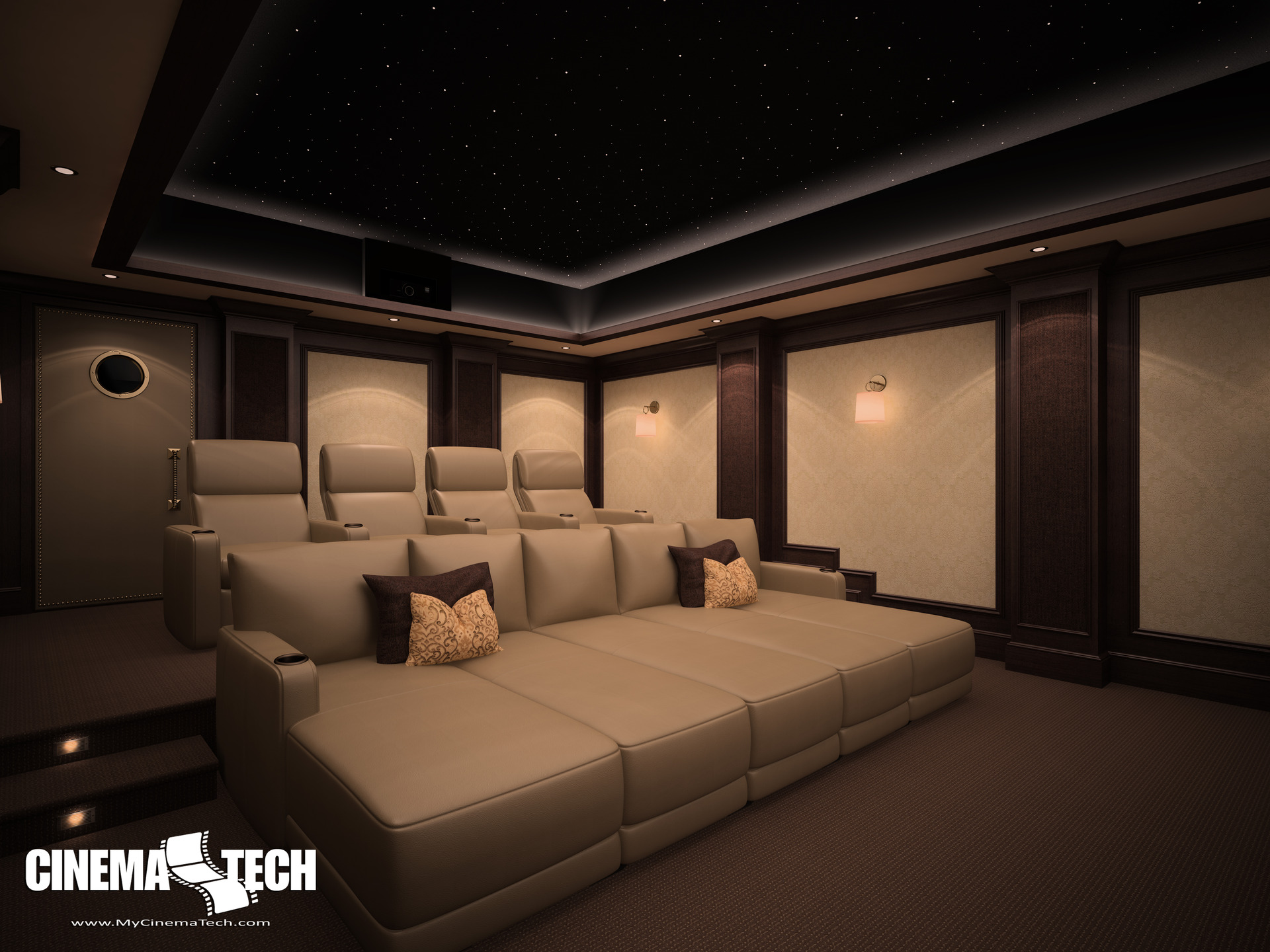Your personalized home entertainment awaits! But, what are the essential components of a home theater system? As a homeowner seeking a luxury home theater experience, you may wonder what installation entails. Let’s explore the key components that make a home theater complete. Get ready to level up your home’s entertainment!
What Are the Key Elements of a Home Theater Installation?
Home theater installation includes optimized room acoustics, quality visual display, and central receiver. You’ll also need proper connection cables, high-performance loudspeakers, and a dedicated subwoofer. Top it off with premium theater furniture, surge protection, and a remote control. With these essential components of a home theater, you’re all set!
- The Room’s Setup
- TV or Video Projector
- Source Components
- Receiver or Preamp/Amp
- Connection Cables
- Loudspeakers
- Subwoofer
- Theater Furniture
- Surge Protector
- Remote Control
1) The Room’s Setup
Various factors go into the room’s setup for an optimal environment. Key aspects include acoustics, where the size, shape, and materials impact sound wave travel. This requires thoughtful placement of speakers and sound-absorbing materials.
Additionally, seating arrangement and screen placement ensure a clear viewing experience. This is where you’ll need attention to distances and angles. Smart lighting, ventilation, temperature, cable management, furniture placement, and room size further contribute. Professional installation is a must for the performance of the home’s movie theater.
2) TV or Video Projector
The TV or video projector holds a central role in any home theater system. They act as the primary visual display for an immersive entertainment venture. Its function is to showcase movies, TV shows, gaming, and other content in high resolution. Factors like contrast ratio, brightness, and color accuracy contribute to the image quality.
Whether one opts for a TV or home theater projector depends on other considerations. Consider things like room size, budget, and personal preference for a distinct impact.
3) Source Components
Source components are crucial elements in a home theater system. They encompass devices like Blu-ray players, streaming devices, gaming consoles, and media servers. The quality of these components directly impacts the audio and video signals fed into the system. This then influences the overall performance and fidelity of the home theater experience.
4) Receiver or Preamp/Amp
The receiver or preamp/amp serves as the central hub for audio processing and distribution. It decodes audio signals, manages different audio channels, and amplifies them for the speakers. A quality AV receiver contributes to the clarity and immersive nature of the audio. This makes it necessary for a high-performance home theater.
5) Connection Cables
Connection cables are the lifelines that link various components in a home theater system. High-quality cables, such as HDMI, ensure minimal signal degradation and support high-definition formats. Proper cable selection maintains optimal connectivity and delivers the best audio-visuals.
6) Loudspeakers
Loudspeakers play a pivotal role in reproducing audio with accuracy and impact. They come in various configurations, including front, center, surround, and height speakers. Each contributes to a surround sound system experience. Proper placement and quality speaker systems are essential for achieving a balanced soundstage.
7) Subwoofer
A subwoofer produces low-frequency sounds, adding depth and impact to the audio. It enhances the bass response, making explosions, deep music notes, and cinematic effects more palpable. A subwoofer is key to achieving a full and dynamic audio performance in a home theater.
8) Theater Furniture
Theater furniture, including seating arrangements, contributes to the comfort and aesthetics. Properly arranged furniture enhances viewing for your family and friends. You’ll want to provide ergonomic home theater seating and maintain an unobstructed view of the screen.
9) Surge Protector
A surge protector safeguards home theater equipment from power surges and electrical fluctuations. It helps protect sensitive electronic devices, including TVs, receivers, and other components. With a surge protector, you ensure the longevity and reliability of the entire home theater system.
10) Remote Control
The remote control is the user interface for managing and navigating through various functions of the home theater. An intuitive remote control simplifies the operation of multiple devices. It allows you to control audio settings, switch between sources, and adjust settings with ease.
Professional Home Theater Installation Done Right
Every component of a home theater system matters, from acoustics and visual displays to source devices and furniture. Professional installation ensures seamless integration, calibration, and optimization for a superior entertainment experience. Elevate your space and transform how you enjoy movies, music, and games.
Contact us for your free in-home analysis and step into ultimate entertainment experiences!



![The Finest Home Theater Installation in The Woodlands [Client Review]](https://diamondjaudio.com/website/wp-content/uploads/2024/04/Cc-XXdCe-400x250.jpeg)
